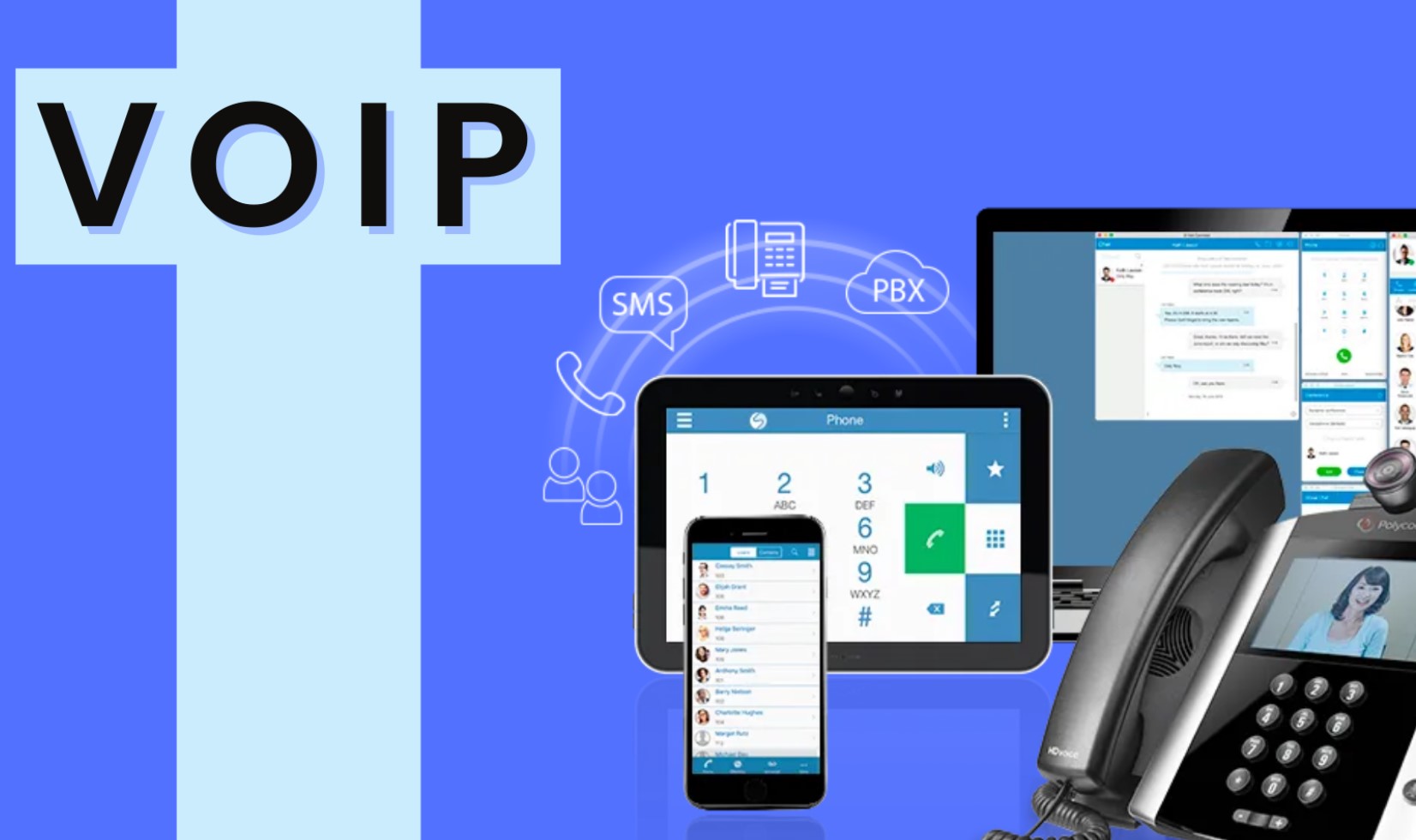Are you looking to upgrade your communication system? Get a new VoIP number and embark on a journey into the world of VoIP Phone Services. In this beginner’s guide, we will explore the ins and outs of VoIP, from its cost-effectiveness and advanced features to its flexibility and scalability. Discover how VoIP can revolutionize your business communication and provide you with enhanced call quality, easy integration, and future-proof technology. Get ready to dive into the exciting realm of VoIP Phone Services and unlock a new level of efficiency and productivity.
Introduction to VoIP Phone Services
In the traditional phone system, calls are transmitted over traditional telephone lines. However, with the advent of Voice over Internet Protocol (VoIP), phone services have become more efficient and cost-effective. VoIP allows the conversion of analog voice signals into digital data packets that are transmitted over the internet, making communication faster and more accessible.
What is VoIP?
VoIP, or Voice over Internet Protocol, is a technology that enables voice communication over the internet. It converts voice signals into digital packets and transmits them over IP-based networks. Unlike traditional phone systems that rely on dedicated phone lines, VoIP utilizes the existing internet infrastructure to transmit voice data.
Advantages of VoIP Phone Services
| Advantages of VoIP Phone Services | Traditional Phone Systems |
| Cost-effectiveness | Higher installation and maintenance costs |
| Flexibility and scalability | Limited scalability and flexibility |
| Advanced features | Limited feature set |
| Easy integration with existing systems | Compatibility challenges with legacy systems |
| Improved call quality and clarity | Potential for lower call quality |
| Mobility and remote access | Limited mobility options |
| Lower long-distance and international costs | Higher long-distance and international costs |
| Efficient conference calling | Costly and complex conference calling solutions |
| Auto-attendant for professional call routing | Manual call routing |
| Voicemail with transcription | Basic voicemail functionality |
| Call analytics and reporting | Limited or no call analytics |
| Easy scalability and adding/removing lines | Tedious process for adding/removing lines |
| Integration with CRM and productivity tools | Limited integration capabilities |
| Enhanced security and privacy measures | Limited security and privacy features |
| Future-proof technology | Outdated technology |
Please note that the table above provides a comparison between the advantages of VoIP Phone Services and traditional phone systems based on the information provided in the previous sections.
How VoIP Phone Services Work
VoIP Phone Services work by converting voice signals into digital data packets and transmitting them over IP-based networks. Let’s take a closer look at the key components involved in the process.
| 1 | Voice data transmission | When you make a call using VoIP, your voice is converted into digital data packets. These packets are then transmitted over the internet in real-time. |
| 2 | IP-based networks | VoIP relies on IP-based networks, such as the internet, to transmit voice data. These networks ensure the efficient and reliable transmission of data packets to the recipient. |
| 3 | Signaling and routing | VoIP Phone Services utilize signaling protocols to establish and manage calls. These protocols handle call setup, termination, and routing, ensuring that the voice packets reach the intended recipient. |
Choosing the Right VoIP Phone Service Provider
Selecting the right VoIP Phone Service provider is crucial for a seamless communication experience. Consider the following factors when choosing a provider:
1. Reliability and uptime
- Reliability and uptime are critical factors to consider. Ensure that the provider offers a robust infrastructure and reliable service with minimal downtime.
2. Call quality and clarity
- Good call quality and clarity are essential for effective communication. Check if the provider has a strong network and offers high-definition voice transmission.
3. Customer support
- Choose a provider that offers excellent customer support. Prompt assistance and technical support can help resolve issues quickly, minimizing communication disruptions.
Setting Up VoIP Phone Services
Setting up VoIP Phone Services involves a few essential steps. Let’s take a look at them:
Internet requirements
VoIP relies on a stable and high-speed internet connection. Ensure that you have sufficient bandwidth to support voice traffic.
Hardware and software
Depending on your needs, you may require specific hardware, such as IP phones or analog telephone adapters (ATAs), and software for call management.
Configuration and installation
Configure the VoIP system according to your requirements. Install the necessary hardware, connect the devices to the network, and set up user accounts.
Essential Features of VoIP Phone Services
VoIP Phone Services offer a wide range of features that enhance communication and productivity. Here are some essential features to look for:
- Call forwarding and routing – Call forwarding allows you to redirect incoming calls to another number or device, ensuring you never miss an important call. Call routing enables intelligent call distribution to the right department or individual.
- Voicemail and transcription – VoIP Phone Services often include voicemail functionality. Some providers also offer voicemail transcription, which converts voicemail messages into text for easy retrieval and review.
- Conference calling – With conference calling, multiple participants can join a single call, enhancing collaboration and reducing the need for in-person meetings.
- Auto-attendant – An auto-attendant greets callers and directs them to the appropriate department or extension. It provides a professional touch and streamlines call routing.
- Call analytics and reporting – VoIP Phone Services offer call analytics and reporting features that provide insights into call volume, duration, and patterns. These analytics can help businesses make data-driven decisions.
Integrating VoIP with Existing Systems
VoIP Phone Services can be seamlessly integrated with existing systems, enhancing productivity and efficiency. Consider the following integration possibilities:
CRM and productivity tools
Integrate VoIP with customer relationship management (CRM) systems to streamline call management, access customer data, and enhance customer service. Integration with productivity tools like email and calendars can also boost efficiency.
Unified communications
Combine VoIP with other communication channels like instant messaging, video conferencing, and team collaboration tools for a unified communications experience.
Mobile and remote access
VoIP Phone Services often provide mobile and remote access capabilities. Employees can use their smartphones or laptops to make and receive calls from anywhere, ensuring connectivity on the go.
Security and Privacy Considerations
Security and privacy are paramount when using VoIP Phone Services. Consider the following aspects:
- Encryption and authentication: Ensure that your VoIP system utilizes encryption protocols to protect voice data during transmission. Strong authentication mechanisms should be in place to prevent unauthorized access.
- Network security measures: Implement network security measures like firewalls, intrusion detection systems (IDS), and virtual private networks (VPNs) to protect your VoIP infrastructure from external threats.
- Privacy policies and data protection: Review the provider’s privacy policies and data protection measures. Ensure that they adhere to industry standards and regulations to safeguard your confidential information.
Tips for Maximizing the Benefits of VoIP Phone Services
To make the most out of VoIP Phone Services, consider the following tips:
- Bandwidth optimization: Optimize your network bandwidth to prioritize voice traffic and ensure optimal call quality.
- Regular updates and maintenance: Stay updated with the latest software releases and firmware updates for your VoIP system. Regular maintenance and troubleshooting can prevent potential issues.
- Training and user adoption: Train your employees on how to effectively use the VoIP system and its features. Encourage user adoption to maximize the benefits.
Potential Challenges and Troubleshooting Tips
While VoIP Phone Services offer numerous advantages, there can be challenges along the way. Here are some potential challenges and troubleshooting tips:
- Call quality issues: If you experience call quality issues, check your internet connection, bandwidth, and network settings. Consider implementing Quality of Service (QoS) measures to prioritize voice traffic.
- Power outages and backup plans: In the event of a power outage, VoIP systems may be affected. Have a backup power solution in place to ensure uninterrupted communication.
- Compatibility with legacy systems: If you have existing legacy systems, ensure that your VoIP solution is compatible with them. Consider using gateways or adapters for seamless integration.
Future Trends and Innovations in VoIP Phone Services
The world of VoIP Phone Services continues to evolve, with exciting trends and innovations on the horizon. Here are a few to watch out for:
1. AI-powered voice assistants
- Artificial intelligence (AI) is being integrated into VoIP systems, enabling advanced voice assistants for automated call handling, data retrieval, and more.
2. Video conferencing integration
- VoIP systems are increasingly incorporating video conferencing capabilities, allowing for face-to-face communication and collaboration.
3. Internet of Things (IoT) integration
- Integration with IoT devices enables a connected ecosystem where voice commands can control various devices, from smart speakers to smart home appliances.

